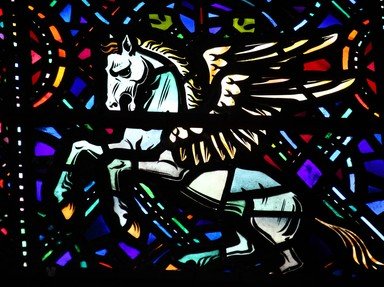Quiz Answer Key and Fun Facts
1. In the beginning, nothing existed. Darkness was everywhere. Suddenly from the darkness, a thin disc appeared, yellow on one side and white on the other. A small bearded man, the Creator, or One-Who-Lives-Above was encased in the disc. When he looked into the darkness, light appeared. He then created three other gods, one being a little girl, another a little boy, and the other as the sun god.
Which Native American legend records the beginning of earth and its inhabitants in this way?
2. Egyptian myths concerning the creation of the world shared some elements in common with each other. One of those recurrent themes involved the idea of the world arising out of the lifeless waters of chaos.
3. A primitive, hairy giant who had horns on his head and wore furs created the earth, at least according to this ancient legend. His name was Pangu, and he lived for about 18,000 years.
What ancient group of Asians believed that Pangu was the progenitor for life on the earth?
4. Long before there were any people, life existed in the sky. Olorun lived there, along with other, lesser beings known as orishas. One of the orishas was not content to live around the baobab tree with all the other orishas, and eventually created a golden chain that he used to reach the earth.
What group's ancient mythology does the legend of The Golden Chain belong to?
5. Most traditional Christian beliefs, based on interpretations from the Hebrew language, state that the earth, the heavens and indeed the entire universe were created "ex nihilo".
What would this Latin term be most likely be to be interpreted as?
6. A large number of gods were responsible for creation and for subsequent events that occurred, according to traditional Japanese beliefs. When "The High Plain of Heaven" first came into existence, this resulted in the appearance of the first three gods. Later, two more gods arose, followed by ten others.
Once all of these deities were in place by what name were they collectively known?
7. According to the Maori tribes of New Zealand, by what names were Heaven and Earth who were the ancestors of all humans known by?
Clue: (think parents)
8. In the beginning the only thing in existence was the Kingdom of Everlasting Truth, according to one African creation story. It was ruled by a group of entities called the "Naba Zid-Wende", according to Mossi legend. They lived in the ancient Mogho kingdom which lay in an interior region of northwestern Africa, today called Burkina Faso.
Absolutely nothing existed prior to their creation of the earth, not even time itself.
9. This question involves a fairly violent creation saga.
Be forewarned!
From which ancient mythology do we read of a giant who was killed by the gods Odin, Vili and Ve, with his body used to create the earth?
10. Hesiod, a Greek poet who lived around the same time as Homer, attempted to explain how the earth came into being.
What was the name that he used to denote the earth?
Source: Author
logcrawler
This quiz was reviewed by FunTrivia editor
looney_tunes before going online.
Any errors found in FunTrivia content are routinely corrected through our feedback system.
